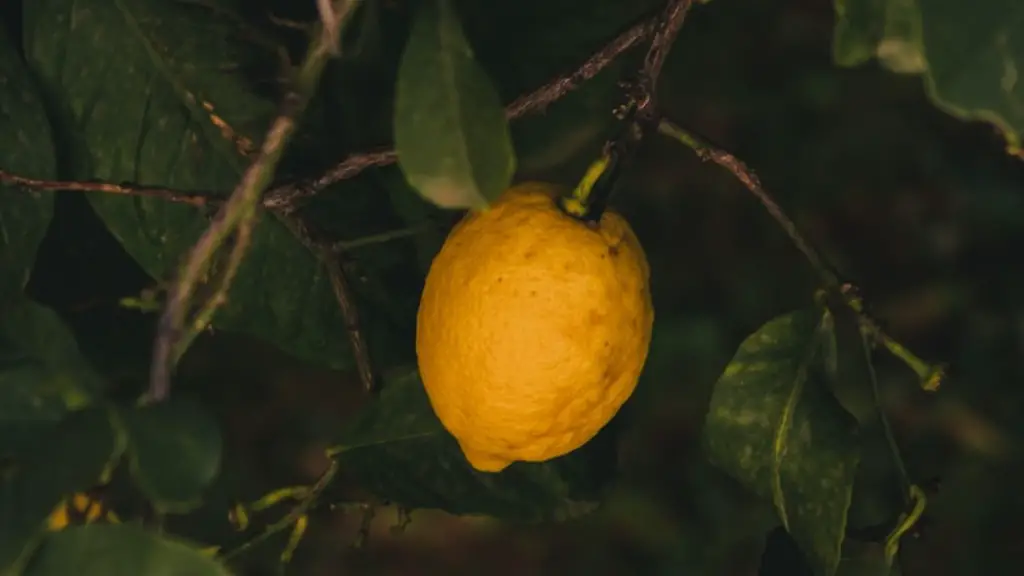Apple trees are highly appealing, and their ability to spew forth fragrant blossom can captivate even the most uninterested onlooker each year. So, when an apple tree fails to flower it can be a great source of frustration. This article will attempt to uncover some of the common causes for why an apple tree may not flower.
Dormancy can be an important factor when concerning the failure to flower of an apple tree. Environmental factors such as cold winter conditions or even too much or too little rainfall can prompt dormancy. This dormancy can eventually pass, however, it’s necessary to take steps to ensure a balanced and natural growth.
Soil nutrition can also play a part in whether or not an apple tree flourishes and blooms. Apple trees need different compounds depending on the age of the tree – but primarily they need nitrogen, iron and potassium, sulfur, phosphorus and magnesium.
A certain degree of sunlight is essential for the development of an apple tree, for without adequate sunlight trees are unable to generate the energy necessary for the creation and intensity of the flowers. Plants need sunlight for photosynthesis, the process of converting light energy and carbon dioxide from the atmosphere into chemical energy (glucose).
Loading an apple tree with too many fertilizers can also result in the failure to flower. Fertilizers provide all the necessary nutrients for optimal growth as well as helping to balance soil nutrition that may be lacking. However, too many fertilizers, particularly nitrogen, can cause excess lush growth with extra foliage, meaning that energy is diverted away from the production of flowers.
Diseases and pests can also affect the flowering of an apple tree, with many of these issues caused by external or even soil-borne organisms such as fungi and bacteria. Experienced arborists can provide advice on how to counter these issues and prevent similar issues from reoccurring in the future.
This last factor – timing – is also important to consider when assessing why an apple tree may not flower. Different apple varieties bloom at different times – some early, some late, some around spring. If a tree has a particular type and you choose to plant it outside of its season, it may fail to flower.
Nutrition Requirements
Apple trees need to have the correct type and amount of soil nutrition. Apple tree nutrition requirements vary depending on the age of the tree. Compounds such as nitrogen, zinc, iron and potassium are all essential for optimal growth. There are some quick-fix fertilizers on the market, yet these are often not the best for apple trees as many of them provide an imbalance of elements. Composted manure, however, is an excellent source of nutrition for apple trees.
Furthermore, apple trees are sensitive to the levels of certain elements in their environment. An overload of nitrogen, in particular, can lead to too much foliage and impede flowering, while insufficient nitrogen and other elements can lead to a weak and unhealthy tree, leading to a decrease in flowering capabilities.
Soil can also be very important in certain regions; acidity levels often need to be neutral or slightly acidic and free of any contaminants or toxic compounds. Specialty arborists will be able to advise on the most optimal soil conditions.
Finally, it’s important to note that apple trees need to be well-watered, especially in the period directly preceding bloom. It’s best to create a watering regime that focuses on roots and not the leaves, as too much water directly on the leaves can cause burns.
Sunlight Requirement
All plants require sunlight for the process of photosynthesis, where the light energy from the sun is used to transform water and carbon dioxide into energy. Apple trees need approximately 5 to 8 hours of sunlight a day in order to generate enough energy to produce flowers. It’s important to note that too much sunlight can also be a problem, as it can cause the flowers to dry out and wither away.
Sunlight can also be important in providing protection from other natural elements. For example, it can help fend off frost, which may be necessary in areas with cooler climates. Furthermore, too much shade can cause a drop in photosynthesis and therefore reduce the ability of the tree to flower at all.
Finally, it’s worth noting that different apple varieties require different amounts of sunlight, so it’s best to research the variety you are trying to grow and make sure it will receive the optimal amount.
Pest and Disease Control
Apple trees can be susceptible to certain pests and diseases which can affect the flowering of the tree. Common offenders include aphids, mites, caterpillars and scale. Fungal infections are also widespread, with such examples as apple scab, apple fire blight, and cedar apple rust.
It’s important to note that prevention is often the best route to take – from using organic pesticide sprays to using anti-scab fungicides. Furthermore, fungi can enter through wounds or splits in the bark, so if this area is well maintained, it will help prevent any fungal issues.
If the tree does become infected, then there are organic methods such as compost tea or using compost as an organic fertilizer. These can help create an environment that is more hostile to these organisms. Finally, it’s worth noting that an arborist can sometimes provide valuable advice and even treatment for your tree.
The Right Variety
Choosing the right apple variety can be integral in the flowering of the tree. Different varieties will flower in different seasons, and this should be taken into account when deciding on a particular species. If the wrong variety is chosen, then the tree may not flower or the flowers may dry out before they can fully bloom.
It’s also important to pick the right tree for your location. Different trees may be suitable in different parts of the country, especially considering factors such as climate, sunlight, rainfall and soil composition.
Other factors such as the size of the tree and the taste and colour of the apples can also be important to consider. While these aren’t directly linked to the flowering of the tree, they can have a profound impact on whether the tree is successful.
Finally, it’s worth noting that most apple varieties will flower if given the correct conditions, such as adequate nutrition and sunlight, balanced soil, pest and disease control and the right variety for the region.




